Discover Fix My Running
Fix My Running

Fix My Running
Author: Matthew Boyd
Subscribed: 34Played: 2,056Subscribe
Share
© Matthew Boyd
Description
Helping Runners Overcome Injuries and Smash PRs
My name is Matthew Boyd, I'm a Physiotherapist and Running Coach.
If you are injured and want some help, book a free call with us:
https://matthewboydphysio.com/booking/
My name is Matthew Boyd, I'm a Physiotherapist and Running Coach.
If you are injured and want some help, book a free call with us:
https://matthewboydphysio.com/booking/
180 Episodes
Reverse
If you’re an injured runner we can help you get back to running pain-free.Click the link to book a free call with ushttps://matthewboydphysio.com/booking/Running Fundamentals Coursehttps://matthewboydphysio.com/running-fundamentals-course/Instagramhttps://www.instagram.com/matthewboydphysio/Related YouTube VideoDoes More Running Cause More ArthritisPainless Knee ArthritisSummaryIn this episode, Matthew Boyd discusses the relationship between running and knee arthritis, debunking the myth that running exacerbates arthritis. He emphasizes the importance of exercise in managing arthritis pain and preventing further deterioration. Boyd shares a success story of a runner who, despite having arthritis, was able to train for and complete a marathon through a structured rehabilitation program that included strength training and adaptive running techniques. He concludes that rest is not the solution for arthritis; rather, building strength and maintaining activity are crucial for managing symptoms.TakeawaysRest from running makes knee arthritis worse.People who run with arthritis experience less pain.Exercise is important to stop the progression of arthritis.Being sedentary leads to worse arthritic symptoms.Weight gain is associated with worsening arthritis.Running keeps you lean and healthy.Resting makes knees weaker and less resilient.A structured training program can help manage pain.Strength training can offload stress from the knees.Healthier individuals tend to have healthier knees.
If you’re an injured runner we can help you get back to running pain-free.Click the link to book a free call with ushttps://matthewboydphysio.com/booking/Running Fundamentals Coursehttps://matthewboydphysio.com/running-fundamentals-course/Instagramhttps://www.instagram.com/matthewboydphysio/Related YouTube VideosIs Running Bad for Your Knees… or Actually Good?Does More Running Cause More Arthritis? | with Dr. Myles Burfield & Dr. Robert BuhmannSummaryIn this episode, Matthew Boyd discusses the relationship between running and knee health, particularly focusing on arthritis. He critiques a video from 'Talking With Docs' that suggests running may be harmful to the knees. Boyd emphasizes that cartilage can adapt to stress and that research shows no direct correlation between running and arthritis. He also highlights the importance of strength training and resilience in maintaining joint health, while disagreeing with some advice given in the video regarding shoe selection and surface types for running. Ultimately, he advocates for the benefits of running and encourages runners to continue their activity for overall health.TakeawaysRunning is not inherently bad for your knees.Cartilage can adapt positively to stress.Research shows no direct link between running and arthritis.Strength training is essential for runners' joint health.Resilience is crucial for preventing injuries.Proper shoe selection is not the top priority.Running on hard surfaces is acceptable if pain-free.Biomechanics play a significant role in running efficiency.Runners should focus on maintaining activity levels.Overall health benefits of running outweigh potential risks.
If you’re an injured runner we can help you get back to running pain-free.Click the link to book a free call with ushttps://matthewboydphysio.com/booking/Running Fundamentals Coursehttps://matthewboydphysio.com/running-fundamentals-course/Instagramhttps://www.instagram.com/matthewboydphysio/SummaryIn this episode, Matthew Boyd discusses the importance of proper running form, focusing on common errors such as low cadence and over striding. He introduces the Fix My Form running drill, which aims to correct these errors by promoting a higher step rate and proper landing techniques to protect the knees. The drill is easy to integrate into a running routine and can lead to long-term improvements in running efficiency and injury prevention.TakeawaysThe Fix My Form running drill is essential for runners.Common running errors include low cadence and over striding.Low cadence leads to increased impact on the knees.A higher step rate allows for more efficient running.Over striding causes a straight knee landing, increasing impact.Landing under the pelvis reduces impact shock.The drill teaches optimal cadence and proper landing techniques.Using a metronome helps maintain the correct step rate.Practicing the drill regularly improves running form.Proper form can help protect knees for lifelong running.
If you’re an injured runner we can help you get back to running pain-free.Click the link to book a free call with ushttps://matthewboydphysio.com/booking/Running Fundamentals Coursehttps://matthewboydphysio.com/running-fundamentals-course/Instagramhttps://www.instagram.com/matthewboydphysio/Related YouTube videohttps://www.youtube.com/watch?v=9KoZg3RSummaryIn this episode, Matthew Boyd discusses the misconceptions surrounding knee pain in runners, emphasizing that stretching is not an effective solution. He explains that knee pain is often due to a lack of strength and resilience rather than tightness. Through his personal experience with IT band pain, he illustrates how running can serve as a form of rehabilitation by building strength and toughness in the knee. Boyd encourages runners to focus on strength training and running as a means to prevent and recover from injuries.TakeawaysStretching won't fix knee pain with running.Knee pain is not caused by tightness.The real problem is a lack of strength.Running puts stress on knee structures.Pain signals indicate the knee can't handle stress.Building strength makes the knee more resilient.Running can be a form of rehabilitation.Personal experience shows running aids recovery.Focus on strength training to prevent injuries.Consult professionals for tailored rehabilitation.
If you’re an injured runner we can help you get back to running pain-free.Click the link to book a free call with ushttps://matthewboydphysio.com/booking/Running Fundamentals Coursehttps://matthewboydphysio.com/running-fundamentals-course/Instagramhttps://www.instagram.com/matthewboydphysio/SummaryIn this episode, Matthew Boyd discusses the common issue of shin pain in runners, often referred to as shin splints or medial tibial stress syndrome. He emphasizes the importance of addressing the root causes of shin pain rather than just treating the symptoms. Boyd outlines three essential strategies for runners: improving running form, strengthening calf muscles, and using running as a form of rehabilitation while monitoring pain levels. The discussion provides valuable insights for runners looking to overcome shin pain and return to pain-free running.TakeawaysShin pain is often misdiagnosed; understanding the terminology is key.Addressing root causes is more effective than symptom management.Improving running form can significantly reduce shin stress.Strong calf muscles are essential for shin pain recovery.Plyometric exercises provide a strong stimulus for bone adaptation.Running should be part of the rehabilitation process.Pain should be classified into green, orange, and red zones.Maintaining a green pain level is crucial for recovery.Avoiding too much running too soon is important for healing.Professional help can assist in overcoming persistent shin pain.
If you’re an injured runner we can help you get back to running pain-free.Click the link to book a free call with ushttps://matthewboydphysio.com/booking/Running Fundamentals Coursehttps://matthewboydphysio.com/running-fundamentals-course/Instagramhttps://www.instagram.com/matthewboydphysio/SummaryIn this episode, Matthew Boyd discusses the role of pogo jumps in the recovery of running injuries. He explains how pogo jumps can serve as a crucial step in rehabilitation, particularly when traditional running is not possible due to pain. The discussion covers the mechanics of pogo jumps, their application in injury recovery, and the importance of desensitizing the injured area to prepare for a return to running. Boyd emphasizes the need for a structured approach to recovery, highlighting the significance of gradual exposure to mechanical stress and the potential for runners to regain their ability to run without pain.TakeawaysPogo jumps can be a vital part of injury recovery.They help increase tolerance in injured areas.Pogo jumps are not always necessary for recovery.They serve as an interim step between rest and running.Desensitization is key for managing pain during recovery.Resting too long can worsen sensitivity in injuries.Pogo jumps provide a mild plyometric stimulus.Gradual exposure to running is essential for recovery.A structured approach to rehabilitation is crucial.Support and guidance can help runners return to running.
If you’re an injured runner we can help you get back to running pain-free.Click the link to book a free call with ushttps://matthewboydphysio.com/booking/Running Fundamentals Coursehttps://matthewboydphysio.com/running-fundamentals-course/Instagramhttps://www.instagram.com/matthewboydphysio/SummaryThis episode explores Brendan's journey as a triathlete dealing with knee pain and the psychological barriers that come with it. Matthew Boyd discusses the importance of understanding the vicious cycle of pain and fear, implementing a structured rehabilitation plan, and ultimately how Brendan regained his confidence and ability to run again. The conversation emphasizes that despite the challenges of aging and injury, there are always ways to improve and continue pursuing one's passions.TakeawaysBrendan's knee pain significantly impacted his triathlon participation.Fear of injury can lead to avoidance and decreased resilience.Age-related muscle loss can contribute to joint pain.A structured rehabilitation plan can help overcome fear and pain.Using pain traffic lights can guide decision-making in training.Brendan's commitment to the program led to gradual improvement.Strength training is essential for supporting joints as we age.Mental health plays a crucial role in physical recovery.It's possible to regain confidence and enjoyment in activities after injury.Aging doesn't mean giving up on sports we love.
If you’re an injured runner we can help you get back to running pain-free.Click the link to book a free call with ushttps://matthewboydphysio.com/booking/Running Fundamentals Coursehttps://matthewboydphysio.com/running-fundamentals-course/Instagramhttps://www.instagram.com/matthewboydphysio/SummaryThis episode explores the concept of run walking as a rehabilitation strategy for injured runners. Matthew Boyd discusses how run walking can be strategically used to manage mechanical stress on injured tissues, allowing for a controlled recovery process. He emphasizes the importance of balancing running and walking intervals to enhance recovery while preventing further injury. The discussion also covers the progression of run walking workouts and the significance of monitoring pain levels to ensure effective rehabilitation. Ultimately, the goal is to transition from run walking to continuous running, enabling runners to regain their strength and resilience.TakeawaysRun walking is a strategic method for injured runners.It allows for controlled mechanical stress on injured tissues.Cardio fitness often exceeds mechanical fitness in injured runners.Resting too long can weaken injured tissues.Run walking can lead to more total running time.The mechanical stimulus is lower with run walking compared to continuous running.Progression in run walking should be monitored closely.Pain levels dictate the progression of run walking workouts.The goal is to transition to continuous running without pain.Run walks are essential for making injured tissues stronger.
If you’re an injured runner we can help you get back to running pain-free.Click the link to book a free call with ushttps://matthewboydphysio.com/booking/Running Fundamentals Coursehttps://matthewboydphysio.com/running-fundamentals-course/Instagramhttps://www.instagram.com/matthewboydphysio/SummaryIn this episode, Matthew Boyd discusses the concept of recovery runs for endurance runners, clarifying their purpose, benefits, and implementation strategies. He explains that recovery runs are not meant to aid recovery but serve as low-intensity training sessions that help increase weekly mileage with minimal injury risk. The discussion also covers when to incorporate recovery runs into training, particularly after harder sessions or during rehabilitation phases, emphasizing their role in building resilience and improving overall running fitness.TakeawaysRecovery runs do not aid in recovery; they are easy training sessions.They allow for increased running volume at low intensity.Recovery runs should be done in zone one or two.They are beneficial for athletes training more than three hours a week.Recovery runs help manage training intensity after hard sessions.They can be used in rehabilitation to transition from injury.Recovery runs are important for building resilience in the body.They help maintain weekly running volume without added stress.Recovery runs can be done based on feel or heart rate.They are a straightforward tool for endurance training.
If you’re an injured runner we can help you get back to running pain-free.Click the link to book a free call with ushttps://matthewboydphysio.com/booking/Running Fundamentals Coursehttps://matthewboydphysio.com/running-fundamentals-course/Instagramhttps://www.instagram.com/matthewboydphysio/SummaryIn this episode, Matthew Boyd discusses the significance of long runs in endurance training, emphasizing their role in glycogen depletion, muscle adaptation, and effective execution strategies. He explains the physiological changes that occur during long runs, the importance of fueling, and the differences between heart rate and pace as metrics for training. The conversation provides insights into how to optimize long runs for better performance and injury prevention.TakeawaysA long run is defined as any run longer than 90 minutes.Glycogen depletion is crucial for endurance training adaptation.Long runs stimulate muscle damage, leading to increased endurance capacity.Tissue resilience improves with long runs, helping prevent injuries.Heart rate is a better metric than pace for long runs.Aim for the middle of your heart rate and pace zones.Long runs should be executed in zone two for optimal benefits.Fueling during long runs is essential for performance.The risk of injury increases after three and a half hours of running.Understanding the balance between training stimulus and recovery is key.
If you’re an injured runner we can help you get back to running pain-free.Click the link to book a free call with ushttps://matthewboydphysio.com/booking/Running Fundamentals Coursehttps://matthewboydphysio.com/running-fundamentals-course/Instagramhttps://www.instagram.com/matthewboydphysio/SummaryIn this episode, Matthew Boyd discusses the process of recovering from a mild running injury, using his own experience with foot pain as a case study. He emphasizes the importance of understanding the injury's capacity, adjusting training plans accordingly, and maintaining a focus on gradual recovery. The discussion covers the significance of pain management, the adaptive zone, and the necessity of a structured recovery plan to prevent further injury and ensure a return to optimal performance.TakeawaysRecovery from a mild running injury requires understanding its capacity.Pain management is crucial in determining training adjustments.Training should be adjusted based on the injury's behavior.The adaptive zone indicates progress in recovery.Gradual increase in training intensity is essential.Resting without assessment can hinder recovery.Injury management should focus on capacity, not just diagnosis.Using running as rehab can be effective if done correctly.Maintaining a training plan is important but must be flexible.Consulting with experts can enhance recovery strategies.
If you’re an injured runner we can help you get back to running pain-free.Click the link to book a free call with ushttps://matthewboydphysio.com/booking/Running Fundamentals Coursehttps://matthewboydphysio.com/running-fundamentals-course/Instagramhttps://www.instagram.com/matthewboydphysio/SummaryIn this episode, Matthew Boyd discusses the significance of endurance runs in an endurance runner's training regimen. He explains the concept of zone two training, its physiological benefits, and how to effectively structure endurance runs to build an aerobic base. The discussion emphasizes the importance of maintaining a conversational pace, understanding lactate thresholds, and the role of different energy systems in running performance.TakeawaysEndurance runs are essential for building an aerobic base.Zone two training is characterized by a conversational pace.Training in zone two reduces injury risk and enhances endurance.The oxidative system is crucial for endurance runners.A solid aerobic base allows for better performance at higher intensities.Aim for 80% of training to be in zone two.Endurance runs should last between 30 minutes to 90 minutes.Consistency in training is key for endurance runners.Proper calibration of training zones is important.Endurance runs form the foundation of a runner's training.
If you’re an injured runner we can help you get back to running pain-free.Click the link to book a free call with ushttps://matthewboydphysio.com/booking/Running Fundamentals Coursehttps://matthewboydphysio.com/running-fundamentals-course/Instagramhttps://www.instagram.com/matthewboydphysio/SummaryIn this episode, Matthew Boyd discusses the essential steps for recovering from running injuries, emphasizing the importance of resilience, strength, and proper form. He outlines a structured five-step recovery process that begins with basic walking and progresses to high-intensity running, tailored to individual needs and capacities. The discussion highlights the significance of using running as a rehabilitation tool and the necessity of adapting training to match the runner's current abilities.TakeawaysRecovery from running injuries requires foundational steps.Resilience is the base of the recovery pyramid.Running is essential for rehabilitation.Gradual increase in running tolerance is crucial.Five structured steps guide the recovery process.Walking and pogo jumps are effective starting points.Individual adaptation rates vary significantly.Training should match the runner's current capacity.Not all runners aim for the same performance level.Tailored recovery plans are essential for success.
If you’re an injured runner we can help you get back to running pain-free.Click the link to book a free call with ushttps://matthewboydphysio.com/booking/Running Fundamentals Coursehttps://matthewboydphysio.com/running-fundamentals-course/Instagramhttps://www.instagram.com/matthewboydphysio/SummaryThis episode delves into the concept of tempo runs for endurance runners, focusing on the importance of zone three training. Matthew Boyd explains the physiological aspects of tempo runs, how they fit into a five-zone training system, and their significance for race preparation. He discusses practical applications, including various workout examples and the importance of fueling strategies for races. The conversation emphasizes the balance of intensity in zone three and its role in enhancing performance for half marathons and marathons.TakeawaysTempo runs are in zone three of the five-zone system.Zone three is a comfortably hard pace, around a six out of ten effort.The top of zone three is near the lactate threshold.Zone three helps runners adapt to race pace both mentally and physically.It's important for fueling strategies during races.Zone three workouts can include intervals and steady runs.Training in zone three is more prevalent closer to race day.Zone three is often considered the most enjoyable running pace.Practicing race pace in zone three is crucial for marathon preparation.Zone three runs help prevent easy runs from becoming too hard.
If you’re an injured runner we can help you get back to running pain-free.Click the link to book a free call with ushttps://matthewboydphysio.com/booking/Running Fundamentals Coursehttps://matthewboydphysio.com/running-fundamentals-course/Instagramhttps://www.instagram.com/matthewboydphysio/SummaryIn this episode, Matthew Boyd discusses patellofemoral pain, commonly known as runner's knee, which affects many runners. He explains the anatomy of the knee, the mechanics involved in running, and the various causes of pain. Boyd emphasizes the importance of strength training, proper running technique, and active rehabilitation strategies to effectively treat and prevent this condition.TakeawaysPatellofemoral pain is common in runners, often referred to as runner's knee.The pain is typically felt on the back of the kneecap due to issues with the subchondral bone.Strengthening the quadriceps and gluteal muscles is crucial for recovery.Compound lifts like squats and lunges are more effective than isolated exercises.Improving running technique can help reduce knee stress.Taping and orthotics may provide temporary relief for some runners.Passive treatments like manual therapy have limited evidence of effectiveness.A structured rehabilitation approach focuses on resilience, strength, and biomechanics.Running can be used as a rehabilitation tool to strengthen the knee.Avoiding overstriding and increasing cadence can help reduce impact on the knees.
If you’re an injured runner we can help you get back to running pain-free.Click the link to book a free call with ushttps://matthewboydphysio.com/booking/Running Fundamentals Coursehttps://matthewboydphysio.com/running-fundamentals-course/Instagramhttps://www.instagram.com/matthewboydphysio/SummaryThis episode delves into lactate threshold training for endurance runners, explaining its significance in improving race performance. Matthew Boyd discusses the concept of lactate threshold, how it relates to training zones, and the physiological changes that occur with targeted training. He emphasizes the importance of structured workouts to enhance threshold pace and provides insights into effective training techniques and their application based on the athlete's fitness level and race goals.TakeawaysLactate threshold training improves race performance.The second lactate threshold is crucial for runners.Threshold pace correlates with one-hour race pace.Improving threshold pace enhances overall running speed.Custom training zones are based on lactate threshold.Threshold intervals are key to improving performance.Work to rest ratios vary based on fitness level.Effective workouts require time spent at threshold.Training for specific races influences workout timing.Improving threshold pace raises zone two running speed.
If you’re an injured runner we can help you get back to running pain-free.Click the link to book a free call with ushttps://matthewboydphysio.com/booking/Running Fundamentals Coursehttps://matthewboydphysio.com/running-fundamentals-course/Instagramhttps://www.instagram.com/matthewboydphysio/SummaryThis episode delves into the complexities of arthritic pain in runners, exploring its symptoms, variations in severity, and the importance of maintaining an active lifestyle. Matthew Boyd emphasizes the need for runners to understand their condition, manage pain effectively, and seek professional guidance to continue running safely and healthily.TakeawaysArthritic pain in runners can vary significantly in severity.Understanding the nature of arthritic pain is crucial for management.Staying active is essential for joint health in arthritis.Strength training is vital for reducing pain and improving function.Running can serve as a form of rehabilitation for arthritic joints.Proper biomechanics can help reduce stress on affected joints.Monitoring pain levels is important for safe training.Professional guidance can enhance recovery and performance.It's important to explore all options before considering surgery.Maintaining a healthy lifestyle supports joint health.
SummaryIn this episode of the Adaptive Zone Podcast, host Matthew Boyd speaks with Lana, client who shares her story of getting back to running after knee pain. She opens up about her journey of overcoming running-related injuries and regaining her strength and endurance. Lana discusses her initial struggles with knee pain, the impact of her injuries on her mental health, and how she found a path to recovery through targeted strength training and coaching. As she reflects on her progress, Lana expresses her excitement for future running goals and the joy of being part of a supportive running community.Lana also shares how getting back to running was about more than fitness, it helped her feel like herself again. As a police officer and martial artist, chronic knee pain once held her back, but through focused strength training and steady running, she now moves pain-free, leads a relay team, and enjoys the active life she loves.TakeawaysLana started running as a way to lose weight and improve fitness.She faced significant knee pain and was advised to stop running.Despite setbacks, she continued to run for mental health benefits.Lana discovered the importance of strength training for injury recovery.Specific exercises helped her regain knee mobility and strength.She learned to focus on quality over quantity in her workouts.Lana's running performance improved significantly after coaching.She now runs without pain and enjoys her workouts more than ever.Setting future running goals has reignited her passion for the sport.Lana feels stronger and fitter than she did in her twenties.Connect with Us:If you’re an injured runner we can help you get back to running pain-free.Book a free call with us:https://matthewboydphysio.com/booking/Running Fundamentals Course:https://matthewboydphysio.com/running-fundamentals-course/Instagram:https://www.instagram.com/matthewboydphysio/
If you’re an injured runner we can help you get back to running pain-free.Click the link to book a free call with ushttps://matthewboydphysio.com/booking/Running Fundamentals Coursehttps://matthewboydphysio.com/running-fundamentals-course/Instagramhttps://www.instagram.com/matthewboydphysio/SummaryThis episode delves into the significance of VO2 max for endurance runners, explaining its role in enhancing running performance. Matthew Boyd discusses how improving VO2 max can elevate overall running capabilities, the physiological adaptations that occur through targeted training, and the strategic implementation of VO2 max intervals to maximize performance gains. The discussion emphasizes the importance of structured training and the potential benefits of working with a coach to optimize training plans.TakeawaysVO2 max is crucial for endurance runners.Improving VO2 max raises the ceiling on running performance.Interval training is an effective method to enhance VO2 max.Higher VO2 max allows for better oxygen utilization.Cardiac output and mitochondrial efficiency are key adaptations.Strategic training is essential for long-distance runners.VO2 max intervals should be incorporated at specific times.Testing VO2 max pace helps track progress.Accumulating time at VO2 max is vital for improvement.Coaching can help implement effective training strategies.
If you’re an injured runner we can help you get back to running pain-free.Click the link to book a free call with ushttps://matthewboydphysio.com/booking/Running Fundamentals Coursehttps://matthewboydphysio.com/running-fundamentals-course/Instagramhttps://www.instagram.com/matthewboydphysio/SummaryIn this episode, Matthew Boyd discusses the prevalence and nature of tendon pain in endurance runners, focusing on common areas affected such as the Achilles and gluteal tendons. He explains the differences between normal and abnormal tendon pain, emphasizing the importance of strength training and proper treatment strategies to manage and prevent these injuries.TakeawaysTendon pain is common in endurance runners, especially in the Achilles and gluteal tendons.Runners will likely experience some form of tendon pain during their running lifetime.The severity of tendon pain can range from mild discomfort to debilitating pain.Tendon pain is typically localized and can be identified by its focal nature.Tendons often warm up during activity, leading to temporary relief.There are two main types of tendon pain: normal and abnormal.Normal tendon pain often resolves after a period of rest and reduced activity.Abnormal tendon pain can be chronic and requires ongoing management.Strength training, particularly heavy loading, is crucial for treating tendon pain.A maintenance program is essential to prevent recurrence of tendon issues.


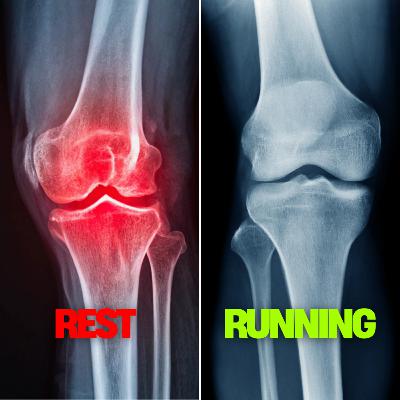


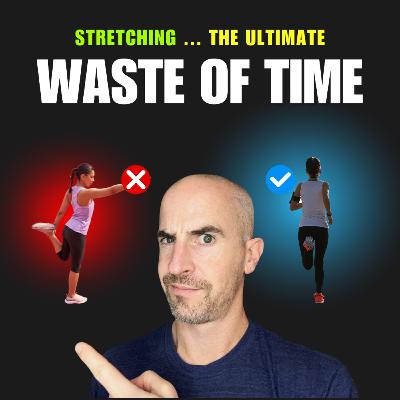
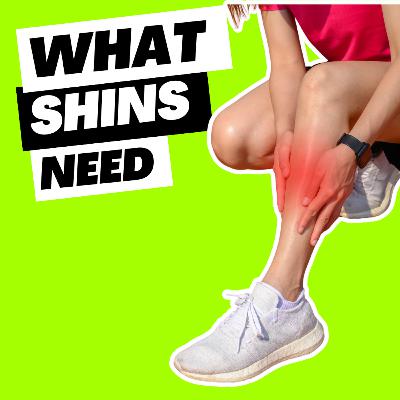
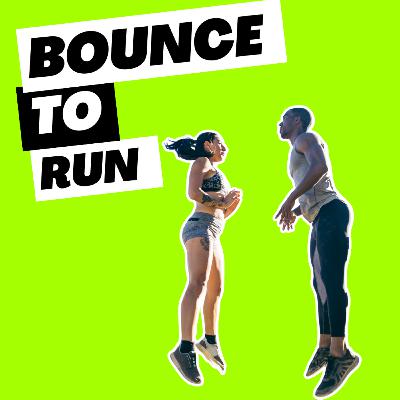

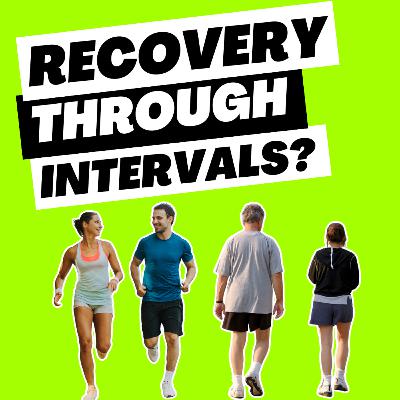
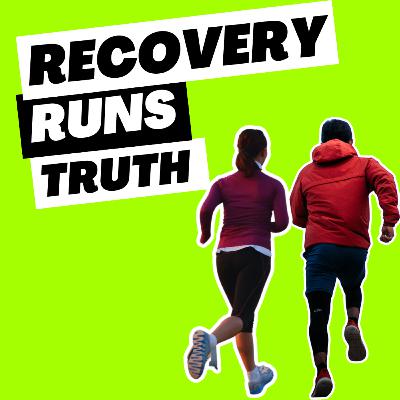
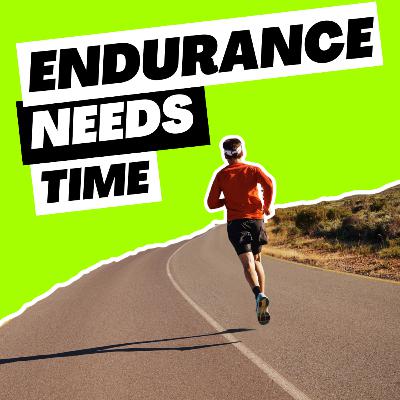

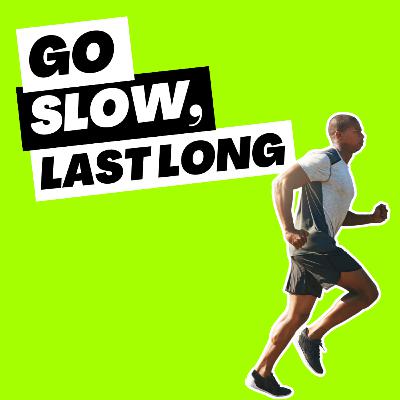

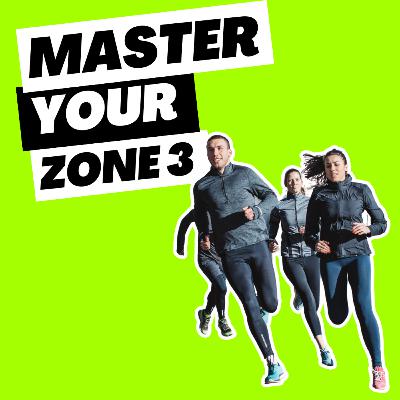


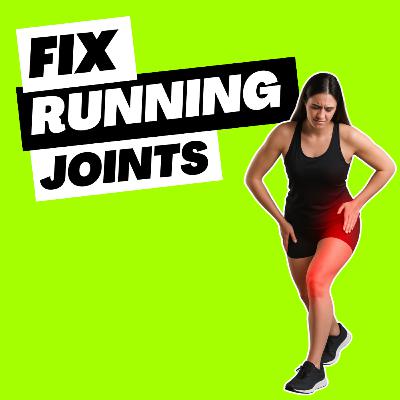
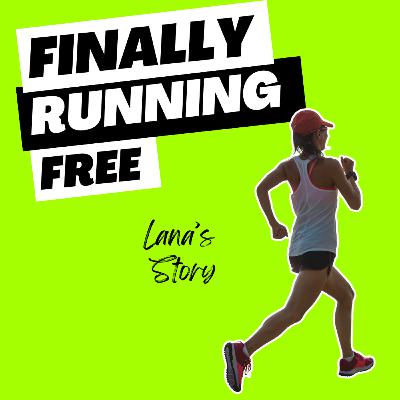
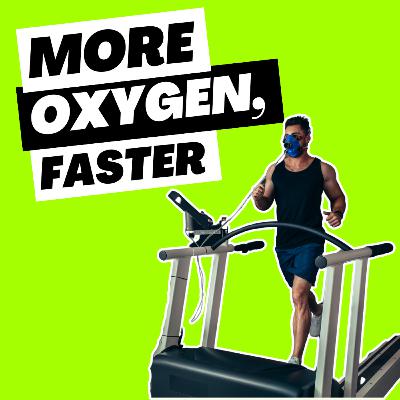




very useful - absolutely brilliant advice